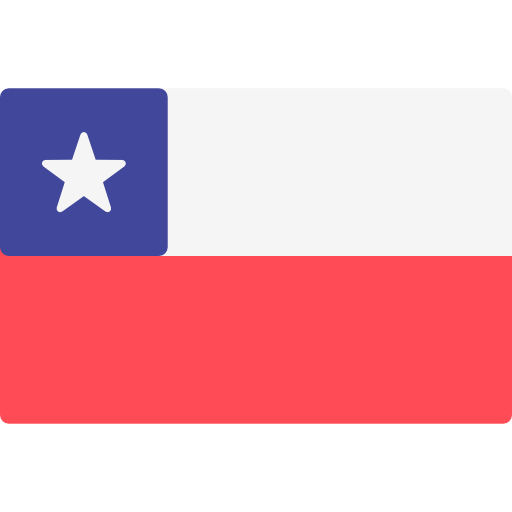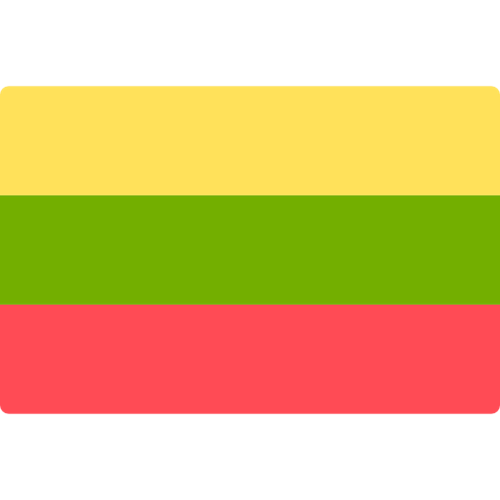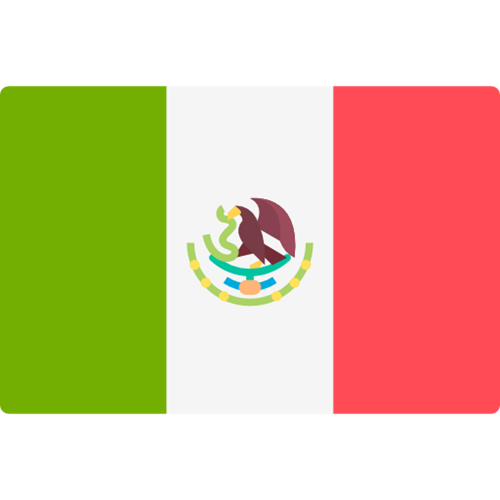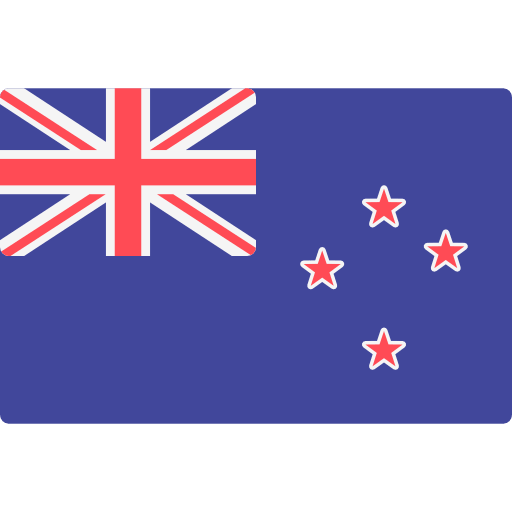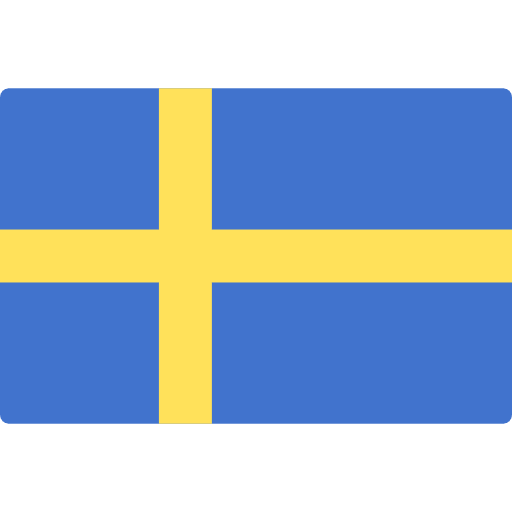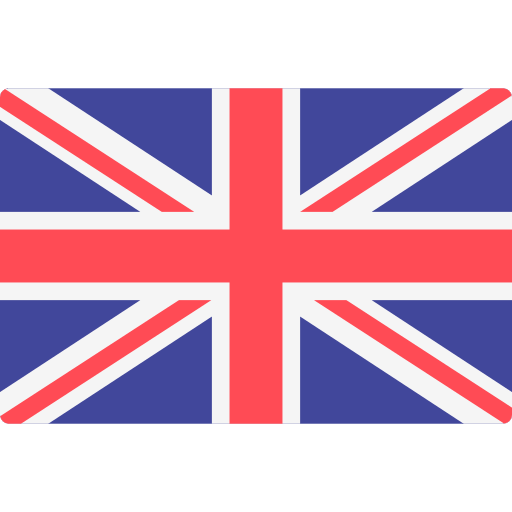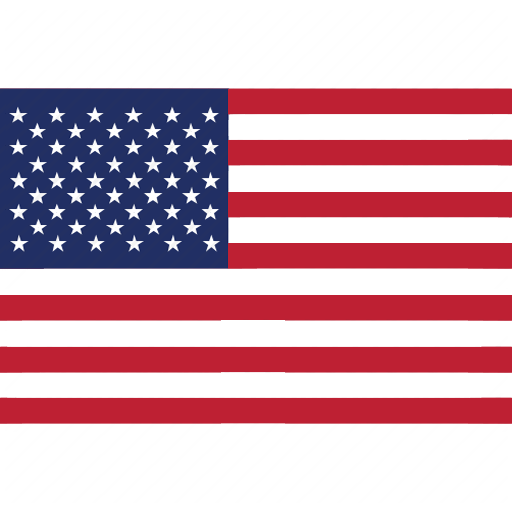Chemicals | Monthly bulletin | July 2025


New additions to the Candidate List of Substances of Very High Concern (SVHCs)
On the 25th of June 2025, the ECHA (European Chemicals Agency) released the new Candidate List of SVHCs with the addition of three new substances. The current list of SVHCs now contains 250 substances.
New substances and restrictions in Annex XVII of REACH
On the 3rd of June 2025, the European Commission published the Regulation (EU)2025/1090 which amends Annex XVII of Regulation (EC) No 1907/2006. This regulation introduces restrictions on the manufacture, use, and placing on the market of N,N-dimethylacetamide (DMAC) and 1-ethylpyrrolidin-2-one (NEP).
These substances shall not be placed on the market as a substance on its own, as a constituent of other substances, or in mixtures in a concentration equal to or greater than 0,3 % after the 23rd of December 2026 unless manufacturers, importers and downstream users have included the relevant chemical safety reports and safety data sheets, derived no-effect levels (DNELs).
This Regulation entered into force on the 23rd of June 2025.
EU Agreement on Detergent Safety and Sustainability
In the 11th of June 2025, the European Commission reached a provisional agreement on new rules for detergents and surfactants proposed by the European Commission in April 2023.
The main points are:
- Improving product safety and market access, including for microbial cleaning products.
- Introducing digital product passports (e.g., via QR codes) for all detergent products, including online sales.
- Allowing voluntary digital labelling to ensure accessibility for all consumers.
- Requiring non-EU imports to have an EU-based representative to enhance compliance and safety.
- Developing new biodegradability criteria, prioritising polymeric capsule films.
- Banning animal testing for detergents.
- Mandating ingredient disclosure to national poison centres, even for non-hazardous products.
- Promoting sustainability through refill stations to reduce packaging waste.
- Aligning detergent rules with existing EU product standards to simplify compliance.
The agreement must be formally adopted by both the European Parliament and Council as part of the ordinary legislative procedure.
Recent publications on REACH Regulation
The following table provides a non-exhaustive summary of some recent updates regarding REACH Regulation (EC) No 1907/2006:
|
Summary of the most recent updates |
||
|
Date |
Subject |
Link |
|
23/05/2025 |
The European Chemical Agency (ECHA) updated the Catalogue of borderline cases between articles and substances/mixtures
|
For more information, consult the ECHA’s website here. |
|
23/05/2025 |
The European Chemical Agency (ECHA) updated the report on Key Areas of Regulatory Challenge with new topics in line with the European Union’s Competitiveness Compass and the Clean Industrial Deal. Specific scientific research is needed to better protect people and the environment from hazardous chemicals and to develop balanced and effective regulatory measures.
ECHA’s report: Key areas of regulatory challenge 2025
|
For more information, consult the ECHA’s website here. |
|
11/06/2025 |
ECHA updated the list of substance-product-type combinations that can be used in treated articles. |
For more information, consult the ECHA’s website here. |
|
11/06/2025 |
ECHA has web pages, which explain the processes for submitting notifications of intention and applications under the Drinking Water Directive. This includes: • a step-by-step infographic on notifications of intention; • information about the tools to be used; and • links to the practical guide, the first IUCLID manual, and the guidance from the Joint Research Centre.
|
For more information, consult the ECHA’s website here. |
Interesting resources on REACH Regulation on the ECHA’s website
- Registry of restriction intentions until outcome - ECHA (europa.eu)
- Registry of SVHC intentions until outcome - ECHA (europa.eu)
- Substance evaluation - CoRAP - ECHA (europa.eu)
- Adopted opinions and previous consultations on applications for authorisation - ECHA (europa.eu)
- Applications for authorisation - current consultations - ECHA (europa.eu)
- Current calls for comments and evidence - ECHA (europa.eu)
- Authorisation List - ECHA (europa.eu)
- ECHA's completed activities on restriction
- Submitted restrictions under consideration
- Assessment of regulatory needs list
Recent publications regarding CLP Regulation
The following table provides a non-exhaustive summary of some recent updates regarding CLP Regulation (EC) No 1272/2008:
|
Summary of the most recent updates |
||
|
Date |
Subject |
Link |
|
28/05/2025 |
Poison centre webinar: Recording and Q&As available ECHA published answers to all questions sent to its experts before and during the webinar, and the recording is now available on its website. |
For more information consult the ECHA website here. |
|
20/05/2025 |
ECHA’s redesigned C&L Inventory is now available in the Agency’s new chemicals database, ECHA CHEM. |
For more information consult the ECHA website here. |
|
20/06/2025 |
Commission Delegated Regulation (EU) 2025/1222 of 2 April 2025 amending Regulation (EC) No 1272/2008 of the European Parliament and of the Council as regards the harmonised classification and labelling of certain substances |
The official publication in the European Commission webside here. |
Interesting resources on the CLP Regulation on the ECHA’s website
- Registry of CLH intentions until outcome - ECHA (europa.eu)
- Harmonised classification and labelling consultations - ECHA (europa.eu)
Update to the battery-related waste list
On the 20th of May 2025, the European Commission published the Delegated Decision (EU) 2025/934 which amends Decision 2000/532/EC as regards an update of the list of waste in relation to battery-related waste.
This update to the battery-related waste list is based on the new terminology introduced and modified by Regulation (EU) 2023/1542 applicable to waste batteries.
This is intended to take into account new battery chemistries and waste management, as well as the evolution of the battery market, and to improve the identification and classification of relevant waste streams, as well as to promote better sorting, recycling, and reporting of waste batteries.
To see the full list of this amendment , consult the official publication on the European Commission’s website here.
On the other hand, after publishing the fourth Simplification Omnibus package on 21 May 2025, the European Commission launched a public consultation on its proposal to postpone the due diligence obligations under the Batteries Regulation (Regulation (EU) 2023/1542) by two years. The consultation is open until 31 July 2025.
European initiatives related to hazardous chemicals
The table below summarises recent publications on the European Commission initiatives and their status regarding:
|
Date |
Title |
|
23/05/2025 |
Export and import of hazardous chemicals
The European Commission is preparing a draft act on the export and import of hazardous chemicals implements the Rotterdam Convention and one specific element of the Stockholm Convention, i.e. the obligations of parties as regards the export of persistent organic pollutants (POPs). |
|
23/06/2025 |
Marketing and use of explosives precursors – updated rules
This initiative will revise those rules by:
|
Vermont amends PFAS law
In May 2024, the State of Vermont signed S.25 into law, launching its first comprehensive PFAS ban in a wide range of consumer products, including aftermarket stain and water-resistant treatments, artificial turfs, class B firefighting foams, cookware, cosmetics and menstrual products, food packaging, incontinency protection products, juvenile products, residential rugs and carpets, ski waxes, and textiles.
On June 11th , 2025, Vermont approved H.238 to amend its PFAS law by broadening the scope, clarifying definitions and refining timelines.
Summary of the amendments:
New product categories
- Cleaning products (general cleaners, hand soaps) – intentionally added PFAS prohibited starting July 1st , 2027
- Dental floss – intentionally added PFAS prohibited starting July 1st , 2027
- Fluorine-treated containers – intentionally added PFAS prohibited for sale or distribution starting July 1st , 2027; intentionally added PFAS prohibited for manufacture starting July 1st , 2032
- Personal protective equipment (PPE) – intentionally added PFAS requires written notice from July 1st , 2025; intentionally added PFAS prohibited starting July 1st , 2029
Revised timelines
- Cookware ban delayed by 2.5 years; originally set for January 1st , 2026, now July 1st , 2028
GB 18580-2025 the mandatory formaldehyde emission limit standard of wood-based panels and finishing products published
On the 30th of May 2025, along with the #12 National Standard Announcement release by the SAC (Standardization Administration China), a new edition of the GB 18580 standard was published.
The GB 18580-2025 will enter into force from the 1st of June, 2026, the 2017 edition will then be withdrawn.
Compared with the 2017 edition, the mainly changes are as follows:
- Changed the scope of this document;
- Changed normative references, with reference to GB/T 18259-2018;
- Added requirements for formaldehyde release limits and labelling in finished and unfinished man-made boards and their products (standard section 4.1 & 4.2);
- set two differencet formaldehyde emission grades, E1 and E0
- Various types of wood-based panels and finishing products for indoor used, including fibrerboard, particleboard, plywood, blockboard, reconstituted decorative materials, laminated veneer lumber, engineered wood, veneered artificial boards, wooden floors, wooden wall panels, wooden doors and windows, stone-plastic composite materials, and wood-plastic composite materials.
- Changed the test method for the 1m3 climate chamber method;
- Added re-inspection requirements;
- Removed inspection report requirements;
- Added the small chamber method for testing formaldehyde release in production quality control (see standard Appendix A).
|
No |
Product Type |
Limit (mg/kg) |
Scope |
Emission Mark |
|
|
1 |
Decorated wood-based panels and their products |
Including impregnated paper laminated wood flooring, solid wood composite flooring, wood-plastic flooring, bamboo flooring, and various types of flooring; impregnated film paper surface artificial boards, painted surface artificial boards, PVC surface artificial boards, wooden doors, and various types of soft and hard surface artificial boards and their products. |
≤0.050mg/m3 |
Can be used directly indoors. |
E0 |
|
2 |
Unfinished decorated wood-based panels and their products |
Including fibreboard, particleboard, oriented strand board, engineered wood, laminated wood, decorative veneer-faced artificial board, plywood, medium-density fibreboard, and other undressed engineered boards and their products. |
≤0.124mg/m3 |
Achieving E0 level or treated to reach E0 level through finishing, it can be used directly indoors. |
E1 |
According to the test specimen balance treatment specified in GB 18580-2025, test samples are stored at a temperature of (23±1)℃ and a relative humidity of (50±5)% for 7 days ± 3 hours, with a minimum distance of 25 mm between the samples.
The testing lead time has been shortened by approximately 7 days with the 2017 edition “(15±2) d” on balance treatment, which is effectively reducing the economic and time costs of formaldehyde release testing for enterprises and quality inspection agencies.
Implementation of GB 18584-2024 limit of harmful substances of furniture
From the 1st of July 2025, the mandatory furniture GB 18580-2024 standard will come into force. This standard will replace the GB 18584-2001 and GB 28481-2012. This standard specifies the terms and definitions, requirements and test methods and test results of hazardous substances in furniture.
This standard applies to all types of furniture products.
Compared with the GB 18580-2001 edition, the mainly changes are as follows:
- The terms and definitions related to formaldehyde emission in the GB 18584-2001 standard have been deleted, and the requirements and testing methods for formaldehyde emissions have been revised (see sections 4.1, Appendix D, Appendix E, Appendix F, and Appendix G, as well as chapters 4 and 5.1 of GB 18584-2001);
- The terms and definitions, requirements, and testing methods for soluble heavy metals in the GB 18584-2001 standard have been removed;
- A definition, requirement, and testing method for migratable harmful elements have been added (see sections 3.2 and 4.2);
- Requirements and testing methods for benzene, toluene, xylene, total volatile organic compounds, radioactive nuclides, and dimethyl fumarate have been added (see sections 4.1 and 4.3);
- The inspection rules in the GB 18584-2001 standard have been deleted.
Compared with the GB 28481-2012 edition, the mainly changes are as follows:
- The definition of plastic furniture in the GB 28481-2012 standard has been deleted;
- The definition and testing methods for polycyclic aromatic hydrocarbons in the GB 28481-2012 standard have been revised;
- The requirements and testing methods for phthalates in the GB 28481-2012 standard have been revised;
- The testing methods for polybrominated biphenyls and polybrominated diphenyl ethers in the GB 28481-2012 standard have been revised;
- The requirements and testing methods for heavy metals in the GB 28481-2012 standard have been deleted;
- The inspection rules, inspection reports, and labelling in the GB 28481-2012 standard have been deleted.
Below is the summary of the hazardous substances that are restricted in furniture:
- Indoor furniture: Formaldehyde, Benzene, Toluene, Xylene, and Total volatile Organic Compounds (TVOC)
|
No. |
Hazardous substances |
CAS# |
Emission limit (mg/m3) |
Applicable scope |
Test method |
|
1 |
Formaldehyde |
50-00-0 |
≤ 0.08 |
Indoor furniture |
Annex D, Annex E of GB 18584-2024 |
|
2 |
Benzene |
71-43-2 |
≤ 0.06 |
||
|
3 |
Toluene |
108-88-3 |
≤ 0.15 |
||
|
4 |
o, m, p-Xylene |
95-47-6; 108-38-3; 106-42-3 |
≤ 0.20 |
||
|
5 |
Total Volatile Organic Compounds (TVOC) |
- |
≤ 0.50 |
- Migration elements for coating and paints
|
No. |
Hazardous substances |
Migration limit (mg/kg) |
Analytical correction (%) |
Applicable scope |
Test method |
|
1 |
Antimony (Sb) |
≤ 60 |
60 |
Infant and children’s furniture: All accessible coating
Other than infant and children’s furniture: Paints only |
Section 8.1 & 9 of GB 6675.4-2014 |
|
2 |
Arsenic (As) |
≤ 25 |
60 |
||
|
3 |
Barium (Ba) |
≤ 1000 |
30 |
||
|
4 |
Cadmium (Cd) |
≤ 75 |
30 |
||
|
5 |
Chromium (Cr) |
≤ 60 |
30 |
||
|
6 |
Lead (Pb) |
≤ 90 |
30 |
||
|
7 |
Mercury (Hg) |
≤ 60 |
50 |
||
|
8 |
Selenium (Se) |
≤ 500 |
60 |
- Others hazardous substances
|
No. |
Hazardous substances |
Limit |
Applicable scope |
Test method |
|
|
1 |
Phthalate |
Sum of DBP, BBP & DEHP |
≤ 0.1% |
1. Plastics furniture 2. Accessible plastics component of infants and children furniture |
GB/T 40906 (External Standard Method) |
|
Sum of DNOP, DINP & DIDP |
≤ 0.1% |
Accessible plastics component of infants and children furniture |
|||
|
2 |
Polycyclic aromatic hydrocarbons (PAHs) |
Benzo[a]pyrene |
≤ 1.0 mg/kg |
1. Plastics furniture 2. Accessible plastics component of infants and children furniture |
GB/T 40971 |
|
Sum of 18 kinds of PAHs |
≤ 1.0 mg/kg |
||||
|
3 |
Decomposable aromatic amine dyes (Azo dyes) |
≤ 20 mg/kg |
Furniture content textile fabric |
GB/T 40904 |
|
|
≤ 30 mg/kg |
Furniture content leather |
||||
|
≤ 20 mg/kg |
Furniture content artificial leather |
||||
|
4 |
Radionuclide |
Radium-226 |
IRa≤ 1.0 Ir≤1.3 |
Furniture content stone component |
GB/T 38724 |
|
Thorium-232 |
|||||
|
Potassium-40 |
|||||
|
5 |
Dimethyl fumarate (DMFu) |
≤ 0.1 mg/kg |
Applicable to upholstered furniture for shipping by sea ONLY |
GB/T 27717 |
|
|
6 |
Polybrominated biphenyls (PBBs) |
≤1000 mg/kg |
1. Applicable to public places furniture, and 2. Furniture products that declare flame retardant properties |
GB/T 40908 |
|
|
7 |
Polybrominated diphenyl ethers (PBDEs) |
≤1000 mg/kg |
|||
Restriction on the import of cleaners containing nonylphenol (NP) and nonylphenol ethoxylates (NPEO)
On June 4th 2025, the Taiwan MOE announced the "Restriction on the Import of Cleaners Containing Nonylphenol (NP) and Nonylphenol Ethoxylates (NPEO)", which restricts the import of cleaners containing NP and NPEO. This announcement takes effect immediately and will be implemented in two phases.
NP and NPEO have endocrine-disrupting properties that can mimic natural hormones in the body, thereby affecting human physiological health and normal childhood development. The use of NP and NPEO cleaners may pose risks to the environment and human health after their release into the environment.
The Ministry announced in 2007 that NP is a toxic chemical subject to management, and since 2008, the use of NP and NPEO in the manufacture of household cleaners has been prohibited. In line with international regulatory trends, the Ministry's Chemical Substance Management Bureau announced on May 13th 2025, the amendment to the "Regulations on Toxic Chemical Substances and their Operational Management" which comprehensively prohibits the use of NP and NPEO in the manufacture of cleaners. According to Article 21 of the "Waste Disposal Act," the Bureau of Resource Recycling has the authority to restrict the import of NP and NPEO cleaners. This restriction will be implemented in two phases:
The first phase: Applies to cleaners containing NP or NPEO at concentrations of 5% or more by weight, effective December 1st, 2026.
The second phase: Applies to cleaners containing NP or NPEO at concentrations of 0.1% or more by weight, effective June 1st, 2027.
The cleaner refers to products containing soap or surfactant components, used for washing or cleaning processes, including liquid, powder, and paste forms.
The following purposes are exempt from this announcement after approval by the central competent authority may they be imported while the applicant provides proof documents:
- Necessary for the protection of agriculture and military use.
- Impossible to obtain suitable alternatives, and used in controlled systems, processes, or prevention equipment, which can be completely recycled, incinerated, or removed from the water.
Draft implementing regulation for Brazil REACH legislative framework
On the 13th of June 2025, public consultation on the draft Decree regulating Law No. 15,022 of November 13, 2024, was closed.
Law No. 15,022 establishes the National Inventory of Chemical Substances and the risk assessment and control of chemical substances used, produced, or imported, with the goal of minimizing adverse impacts on health and the environment.
The draft would provide detailed procedures and regulations on substance registration, registration fees, etc., to implement Law No. 15,022, improving Brazil's REACH legislative framework.
For more information, consult the public consultation on the Brazilian Government’s website here
Three new substances added to the Swiss POP convention
On the 11th of April 2025, the Swiss Federal Office for the Environment published RO 2025 244 which adds methoxychlor, dechlorane plus and UV-328 to the list of substances for elimination in Part I of Appendix A to the nation’s Stockholm Convention on Persistent Organic Pollutants (POP Convention, RS/SR 0.814.03).
The effective date is the 25th of February 2025.
For more information, consult the official publication on the Swiss Confederation website here (version in French, German or Italian)
Regulatory proposals notified to the WTO
The table below summarises the most recent notifications made to the World Trade Organization (WTO) (non-exhaustive):
|
Notification number |
Entity |
Title |
|
Federal Office for the Environment (FOEN) |
Draft Revision of the Ordinance of the Federal Council concerning amendments of the Ordinance on the Reduction of Risks relating to the Use of Certain Particularly Dangerous Substances, Preparations and Articles (Chemical Risk Reduction Ordinance, ORRChem, Fedlaw number: SR 814.81)
The draft ordinance plans to regulate, among other things, the following chemicals:
|
Sustainability, The Circular Economy and The Environment
Miscellaneous technical publications relating to environmental, plastics, packaging and waste
The table below summarises the most recent publications regarding sustainability, the circular economy, and the environment (non-exhaustive):
|
Entity |
Date |
Publication |
|
European Commission SCHEER (Scientific Committee on Health, Environmental and Emerging Risks) |
7/04/2025 |
Scientific Opinion on "Draft Environmental Quality Standards for PFAS total under the Water Framework Directive" |
|
Republic of France |
20/05/2025 |
Resisting deregulation at the expense of human rights and environmental protection - Opinion on the European Commission's "Omnibus I Directive proposal" (A-2025-5) The Commission nationale consultative des droits de l’homme (CNCDH) T strongly criticizes the EU's proposed “Omnibus I” directive, warning that it threatens recent progress on corporate sustainability. While the directive is presented as reducing red tape, the CNCDH argues it would undermine human rights and environmental protections by delaying key obligations, weakening due diligence in supply chains, and reducing legal accountability. The opinion also criticizes France’s support for the proposal and warns against limiting civil society input and weakening climate and enforcement measures. |
|
European Commission |
23/05/2025 |
The European Commission has introduced new measures to accelerate the EU’s shift toward a low-carbon economy. Four pieces of secondary legislation, along with a communication on the Net-Zero Industry Act (NZIA), aim to strengthen the resilience and competitiveness of European industry while lowering its carbon emissions. These rules define which manufacturing projects qualify for key benefits under the Act—such as streamlined permitting, strategic project designation, and evaluation based on non-price criteria. The goal is to boost the production of net-zero technologies, cut greenhouse gas emissions, and harness the EU’s clean tech potential. The Commission has adopted the following acts:
|
|
European Commission |
24/05/2025 |
Public Consultation for Roadmap towards Nature Credits: Nature boosts human well-being and economic resilience by providing vital ecosystem services and supporting climate action. To protect and restore nature, the EU aims to develop high-integrity nature credits and certifications that attract private investment, complement public funding, and reward land and resource stewards like farmers and fishers. These tools are intended to turn nature protection into a sustainable source of income and value creation.
|
|
European Commission |
6/6/2025 |
Initiative on Rules for the calculation and verification of average loss rates for sorted waste:
The Commission aims to establish uniform, simple and proportionate rules for the calculation, verification and reporting of the weight of materials or substances lost after a waste sorting operation, and which are not subsequently recycled, based on average loss rates for sorted waste. The uniform rules will ensure that data supporting the calculation of recycling rates are comparable and reliable. Currently under preparation. |
|
European Commission |
6/6/2025 |
Public Consultation for Initiative on Green-listing certain waste for the purposes of shipments to recovery between Member States. This initiative implements the new Waste Shipments Regulation and complements the objectives of the future Circular Economy Act.
It will consider certain waste as green-listed and may also introduce contamination thresholds so that other types of waste can be green-listed.
The initiative will be preceded by a consultation process to gather input from a wide range of stakeholders on waste streams to be addressed.
Consultation period: 02 July 2025 - 31 October 2025 |
|
European Council |
10/06/2025 |
The Council and Parliament reach an agreement to make detergents safer for both people and the environment. The agreement, among other things, allows the European Commission to impose stricter biodegradability standards for water-soluble detergent capsules and assess whether similar criteria should apply to other major organic ingredients in detergents. It also includes a revision clause enabling future tightening of these targets. |
|
European Commission |
16/06/2025 |
The 2025 "Digital Decade" Staff Working Document emphasizes the critical interplay between digital transformation and the energy transition, noting that surging energy needs—particularly from data centers and AI technologies—are challenging the EU’s clean energy capacity and grid infrastructure. The document calls for a stronger alignment of the green and digital transitions—advocating investment in clean and reliable energy sources, smarter grid systems, and integrated policy efforts—to ensure digital infrastructure can grow sustainably and support Europe’s competitiveness, technological sovereignty, and climate goals. |
|
European Commission |
16/06/2025 |
The Commission Staff Working Document on the Monitoring of the European Declaration on Digital Rights and Principles, evaluates how the EU and its Member States are implementing the Declaration’s commitments. Chapter VI specifically addresses the digital transition’s environmental dimension, noting only moderate progress . Though EU action—such as data Centre reporting requirements, the Digital Product Passport under ESPR Regulation, and Directive on Common Rules Promoting the Repair of Goods —has laid important groundwork, many Member States show uneven engagement. The report highlights promising practices and tools but underscores persistent gaps in communication, coordination, and consistency in embedding sustainability and digital rights across the EU. |
|
European Commission |
19/06/2025 |
Public consultation for Nature Restoration Regulation – science-based method for monitoring pollinator diversity and pollinator populations. Under the Nature Restoration Regulation, EU countries are required to:
To get appropriate data to assess these targets, EU countries must monitor the abundance and diversity of pollinator species. The Commission is proposing a science-based methodology for this data collection.
Feedback period: 19 June 2025 - 17 July 2025 |
|
European Commission JRC (Joint Research Centre) |
20/06/2025 |
New EU labels to help consumers choose more repairable electronics: The Commission has introduced a new repairability score system, which will be displayed on the new Energy Label that accompanies these electronic products. This way, consumers will be able to make more sustainable choices when purchasing these products. |







